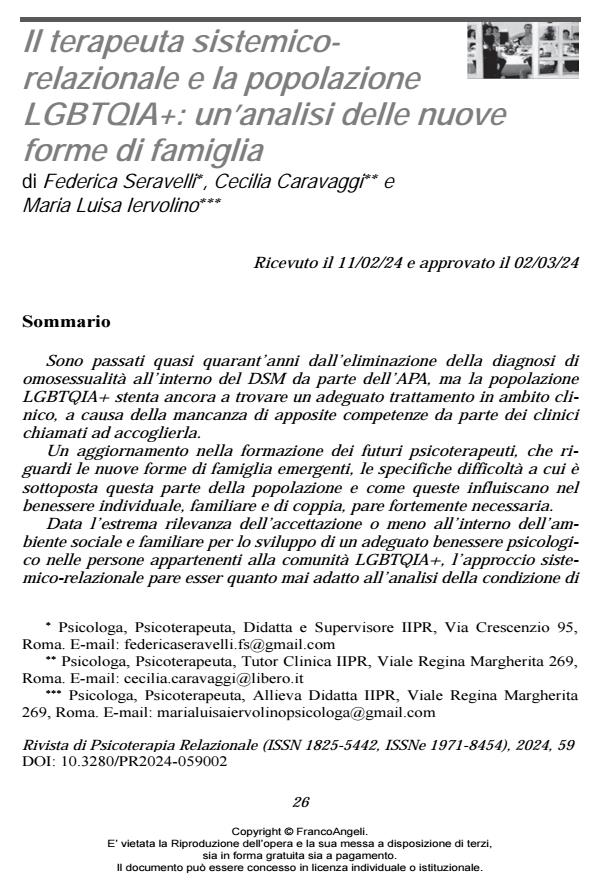The systemic therapist and the LGBTQIA+ population: an analysis of new family forms
Journal title RIVISTA DI PSICOTERAPIA RELAZIONALE
Author/s Federica Seravelli, Cecilia Caravaggi, Maria Luisa Iervolino
Publishing Year 2024 Issue 2024/59
Language Italian Pages 19 P. 26-44 File size 241 KB
DOI 10.3280/PR2024-059002
DOI is like a bar code for intellectual property: to have more infomation
click here
Below, you can see the article first page
If you want to buy this article in PDF format, you can do it, following the instructions to buy download credits

FrancoAngeli is member of Publishers International Linking Association, Inc (PILA), a not-for-profit association which run the CrossRef service enabling links to and from online scholarly content.
Almost forty years have passed since the removal of the homosexuality diagnosis from the DSM by the APA, but the LGBTQIA+ population still struggles to find adequate treatment in clinical settings, due to the lack of appropriate skills among clinicians tasked with welcoming them. An update in the training of future psychotherapists seems strongly necessary, addressing the new emerging forms of family, the specific challenges faced by this part of the population, and how these impact individual, family and couple well-being. Given the extreme importance of acceptance within the social and family environment for the development of adequate psychological well-being in individuals belonging to the LGBTQIA+ community, a systemic approach appears to be particularly suitable to analyze the condition of this part of the population as well as understanding it, given the longstanding attention paid to the complexity of human beings.
Keywords: LGBTQIA+ population, minority stress, coming out, new families, Queer families, same-sex families.
Federica Seravelli, Cecilia Caravaggi, Maria Luisa Iervolino, Il terapeuta sistemicorelazionale e la popolazione LGBTQIA+: un’analisi delle nuove forme di famiglia in "RIVISTA DI PSICOTERAPIA RELAZIONALE " 59/2024, pp 26-44, DOI: 10.3280/PR2024-059002